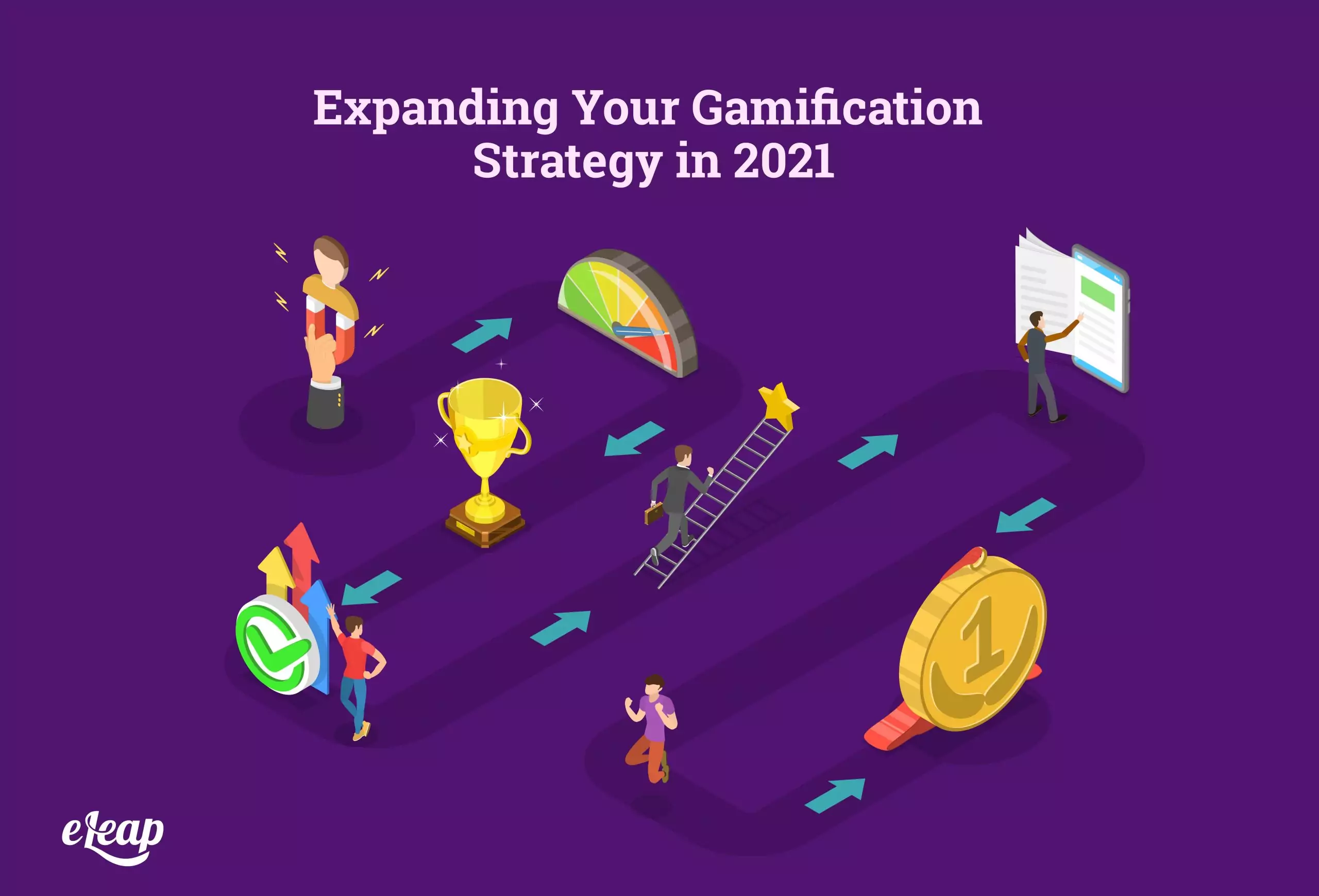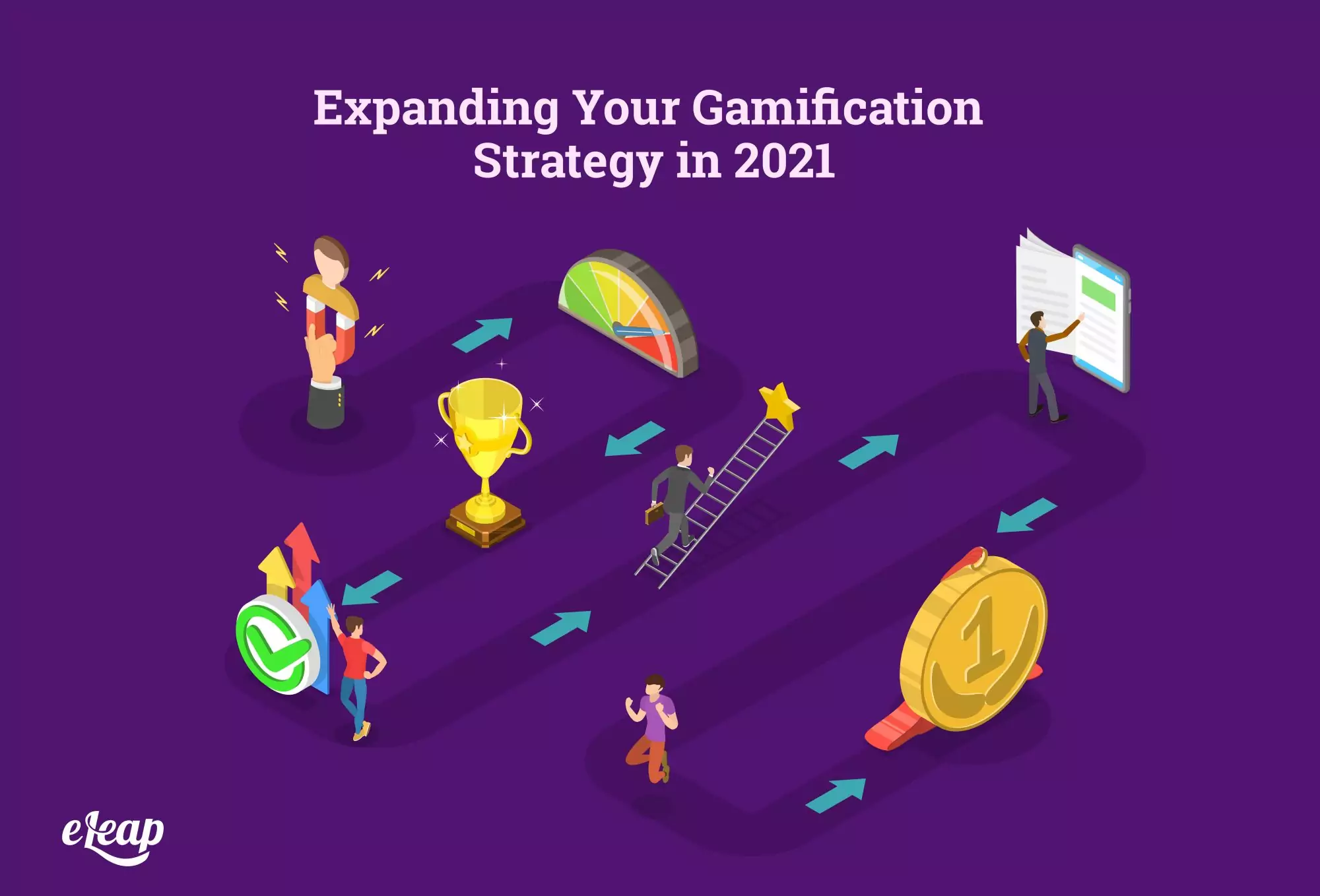Expanding Your Gamification Strategy in 2021

According to Statista, the gamification market is expected to hit $4.91 billion in 2021. That’s a testament to many things, including its importance to your eLearning efforts. Now, combine that with the results of the COVID-19 pandemic and the fact that many companies are keeping the majority of their workforce remote for the remainder of the year and possibly longer and you have an interesting situation of trying to keep team members engaged. Not having an effective engagement process that utilizes and strong gamification strategy could be leaving your organization with under performing team members.
Learning and development must continue – compliance with industry rules and government regulations demands no less. L&D is also critical to performance management, career development, employee growth, and other areas vital to business success. Gamification can and should play a central role in those efforts. In fact, it’s perfectly suited to the new world in which we find ourselves, where most L&D happens digitally.
With that being said, it’s challenging to create viable gamification strategies. This is particularly true if you’re new to gamification or haven’t done much beyond adding leaderboards and badges to your LMS. In this post, we will explore tips to help you expand your gamification strategy in 2021 and onward.

Look Beyond Augmentation and Engagement Metrics
One of the first things to understand when it comes to creating a 2021-focused gamification strategy is that the old way of doing things is slowly phasing out. In the past, gamification was used to augment traditional eLearning efforts. For example, you might include a sprinkling of interactive video throughout your regular eLearning modules, or hope to instill a sense of competition within employees by using leaderboards and high scores.
To be clear, those are all worthy goals. However, they may not be enough. In today’s digital-focused world, employees are coming to expect more.
A key to your successful gamification strategy is moving beyond using these techniques to augment traditional content and developing customized learning content based on gamification techniques. It’s time to take your eLearning to a brand new level and provide your learners with a dramatically improved experience. How can you do that, though?
Tell Stories
Take a look at the most successful video games on today’s market. The vast majority of them rely on storytelling. It could be an immersive fantasy RPG, or it might be something sports-related. Regardless of niche, they all include some specific elements that help tell a story, engage players, and move them forward, including:
- Character and NPC backstories
- Cut scenes that tell or expand stories
- An overarching story-as-plot
Without some element of storytelling, a game is nothing more than progressing through various levels of difficulty without any reason for players to care about that progression. Humans are story-focused creatures. There is a reason that storytelling has been used for millennia as a teaching tool, from today’s classrooms all the way back to Aesop and into the misty depths of prehistory.
Baking story into your learning content is a great way to improve the learner experience and boost engagement. And you’ll find that with storytelling added, some other gamification elements are less important, such as animation or graphic design. Of course, it does require a skilled hand to create compelling storylines, stitch them together, and tie them to skills development.
Avatars
Look at any social media platform. Explore any gaming system. What do you find? Most of them provide a way for players to personalize their accounts in the form of avatars. From Xbox to Facebook, avatars give people a way to visually identify themselves, whether that’s through a real-world picture of themselves, a favorite game character, a piece of art, or something else.
Why should you consider avatars in your gamification strategy? It goes deeper than just giving employees an avatar tied to their account within the LMS. What we’re talking about here is using avatars to tie directly into the lesson being taught to help learners connect and engage with the content.
For instance, suppose a module is over the dangers of data breaches and cybersecurity. The avatar could be a detective tasked with ferreting out how an attacker was able to gain access to the company’s data. Using that avatar, learners would be able to explore related topics, like password hygiene, identifying potential phishing attacks, and more, but do so from a unique perspective that transcends the usual relationship between learners and content.
This is just one example. Avatars can be created for just about any type of learning content. They allow learners to “step out” of their own identity for a moment and learn about important concepts and topics through the perspective of someone else. That delivers better information retention in many instances, and also amplifies engagement.
Keep It Personalized
This particular strategic element is probably something you are already doing. However, organizations should double-down on personalization efforts within eLearning in 2021 and onward. This is in keeping with other trends in the world, including consumer expectations from the company’s they do business with. When you consider that your employees are also consumers and share those expectations, it becomes easier to see the benefits of a personalized, gamified eLearning experience.
How can you personalize the experience? There are plenty of options, many of which you may already have in place, such as using the learner’s name and providing a centralized dashboard specific to them alone. However, there are plenty of other ways to achieve greater personalization, including:
- Basing content on learner preferences
- Basing content and progression on learner choices
- Basing outcomes of a lesson on learner actions within the content
Gamification Is Here to Stay
Gamification simply offers too many benefits to ignore. L&D professionals can look for it to become more and more a part of the eLearning experience. Creating strategies based on gamification concepts and elements can help improve learner experiences and drive better information retention, as well as learner engagement. Moreover, creating gamified content tied to does not have to be an insurmountable challenge. Use the tips we’ve covered above to create viable strategies and drive improved outcomes for your learners, as well as for your organization.